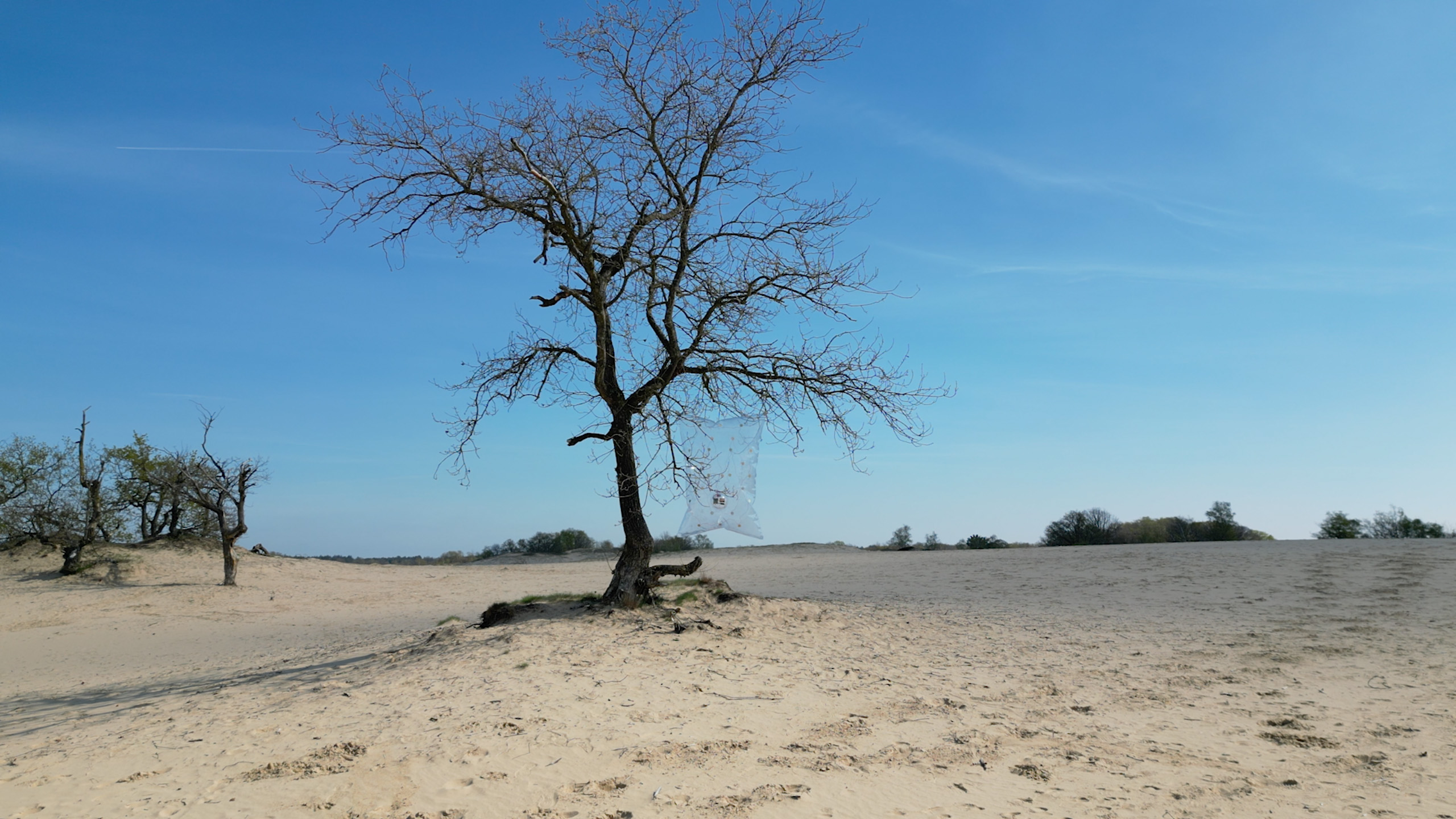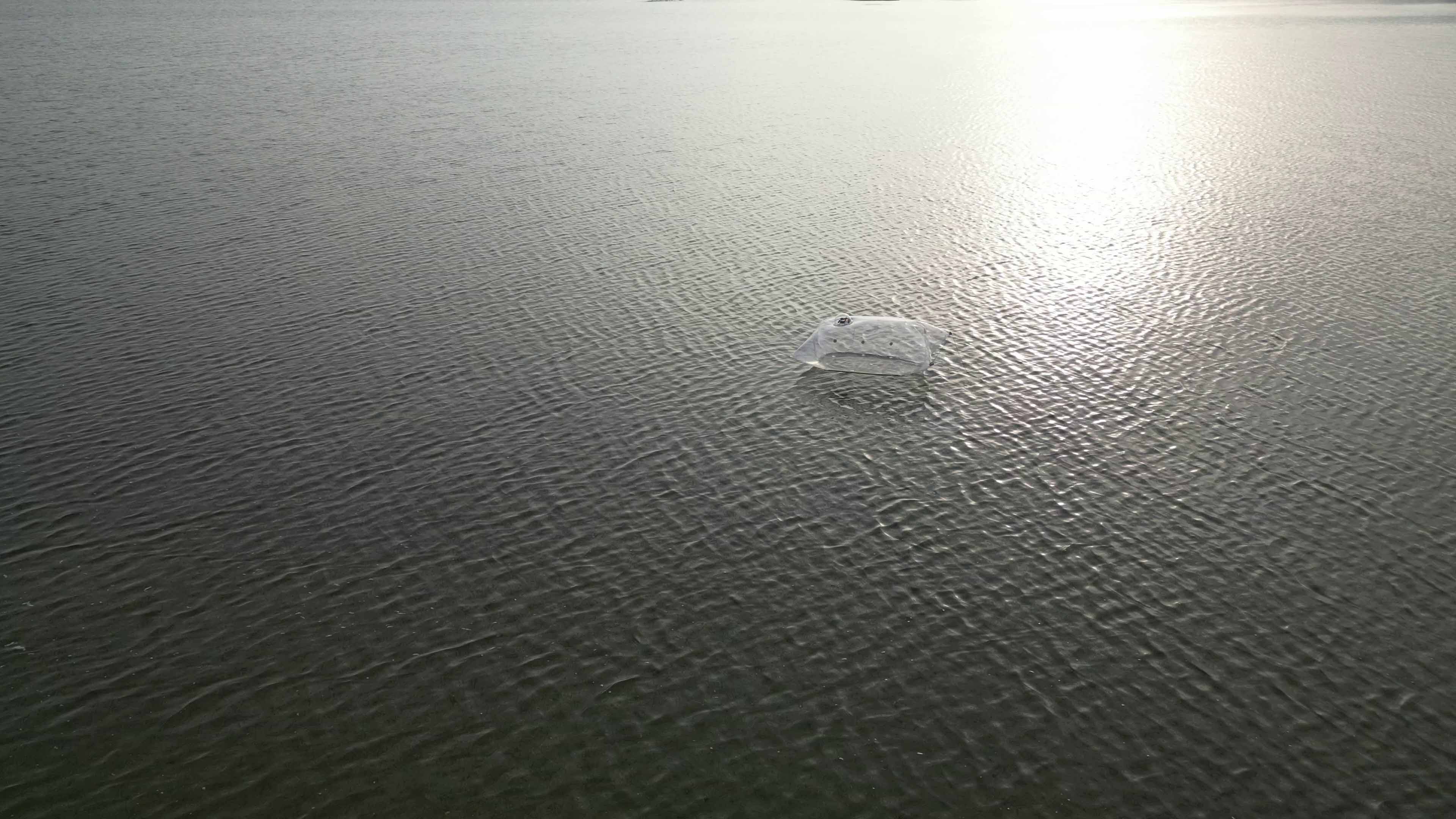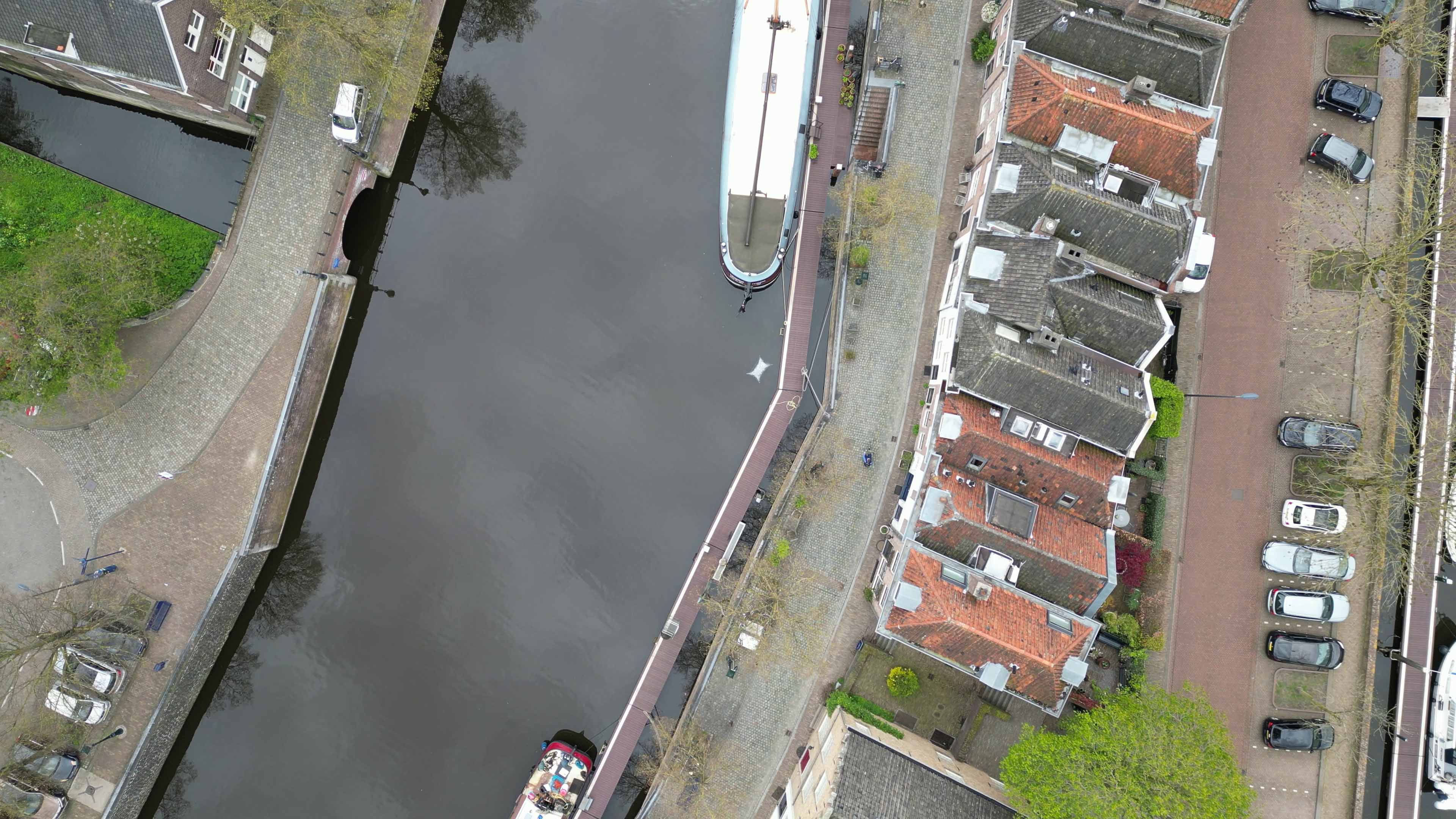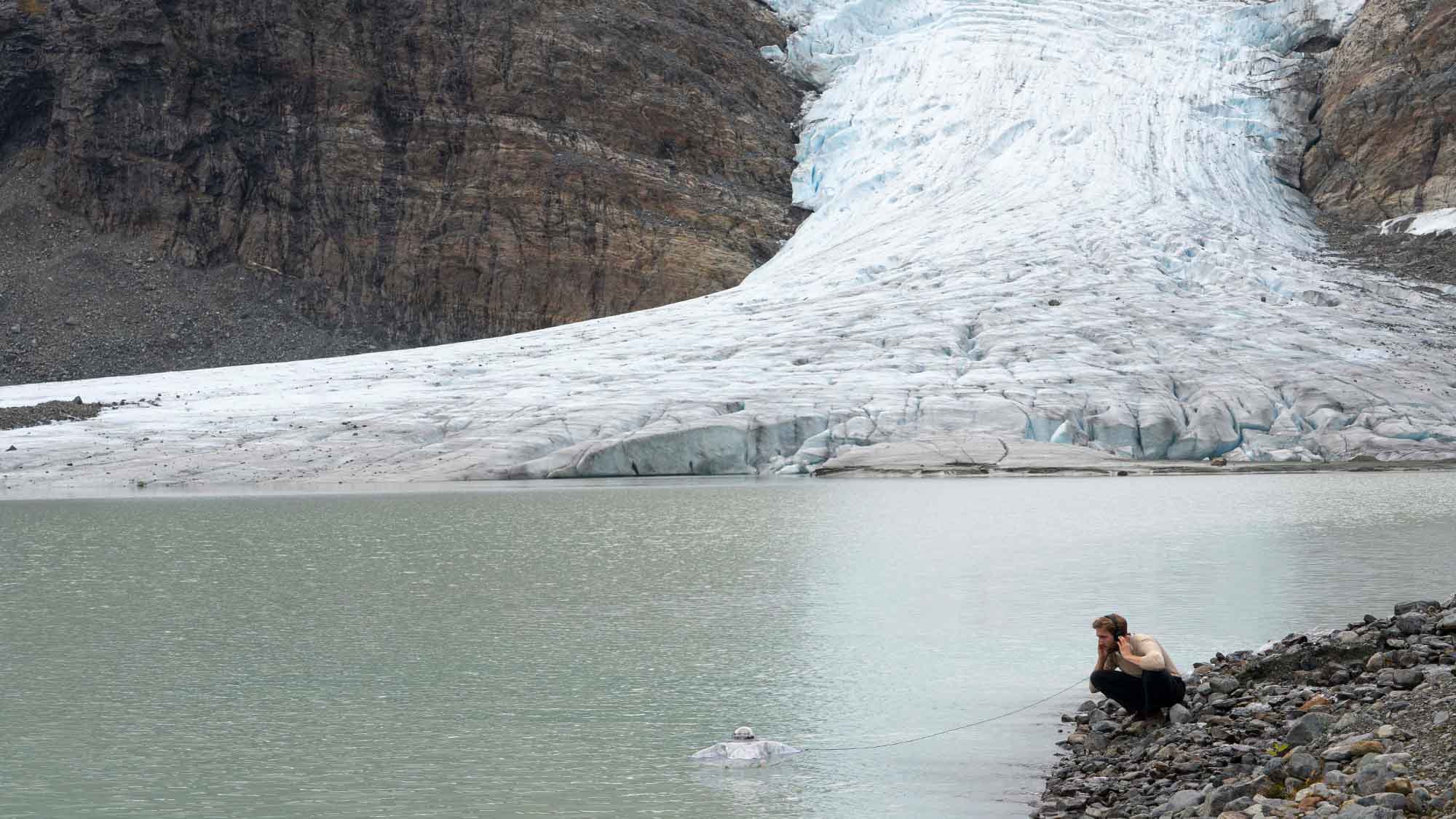
[Photo by Mari Mäkiö]
Prosthetic Sensorium
Prosthetic Sensorium comprehends electronic sensors and environmental monitoring stations as technological extensions of our organic bodies, allowing us to perceive our planet's transformations on a greater sensorial spectrum. The various “listening extensions” register their surrounding environment through an inflatable resonance body equipped with piezo-electric vibration sensors and microphones. Invented for use on water bodies, these lightweight driftbodies float into spaces that are barely accessible for humans and become a “prosthetic extension”, enabling us to listen to geospatially distant ecosystems and their inhabiting entities – croaking frogs, migrating bird species like cranes or weather phenomena such as storms and the drizzling of rain. They transmit the ambient symphony of a forest, capture the running meltwater of a glacier, or live-stream the anthropophony of cars, bikes and chattering pedestrians walking next to the Dutch canals – or the boats driving on them.
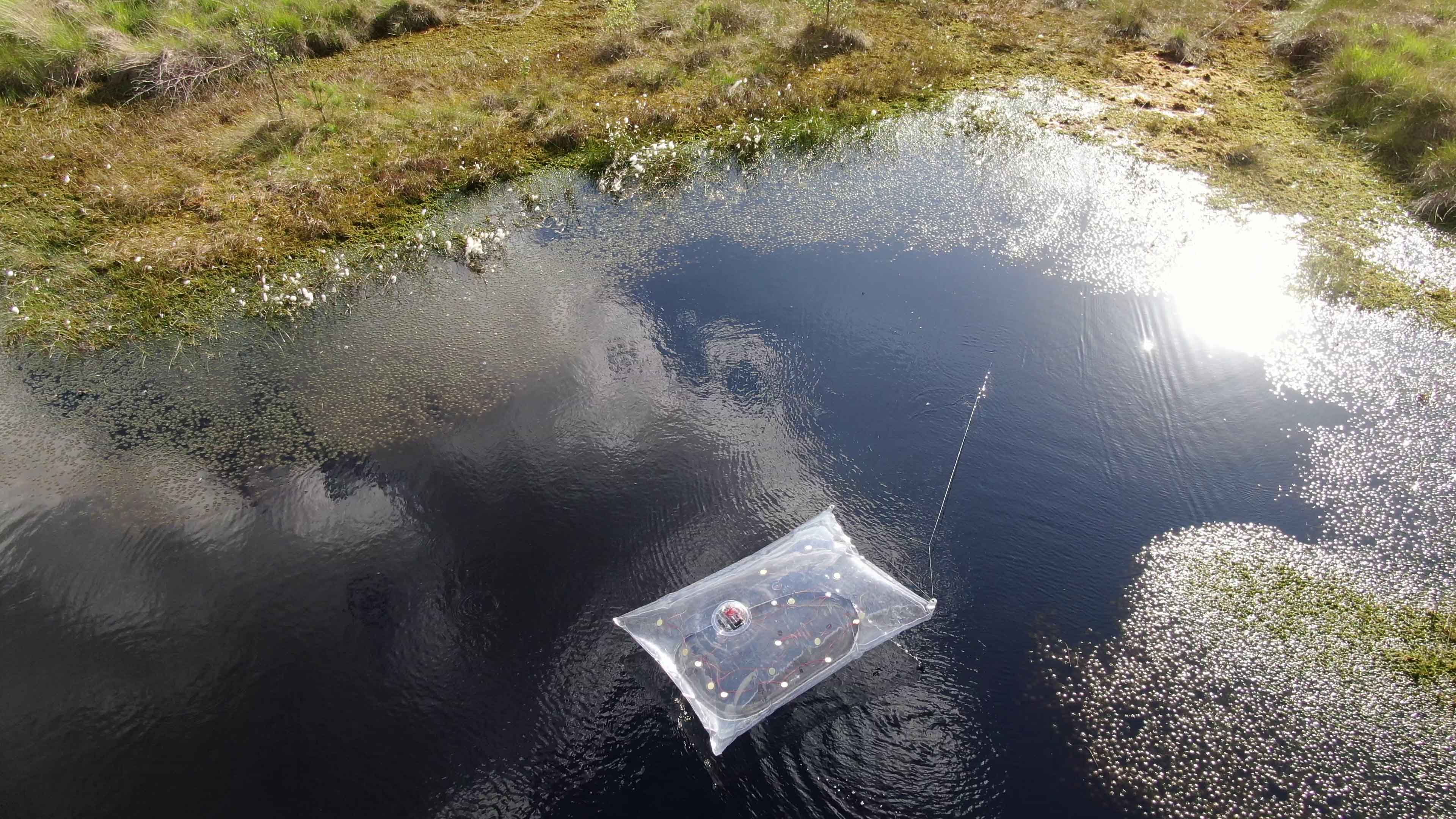
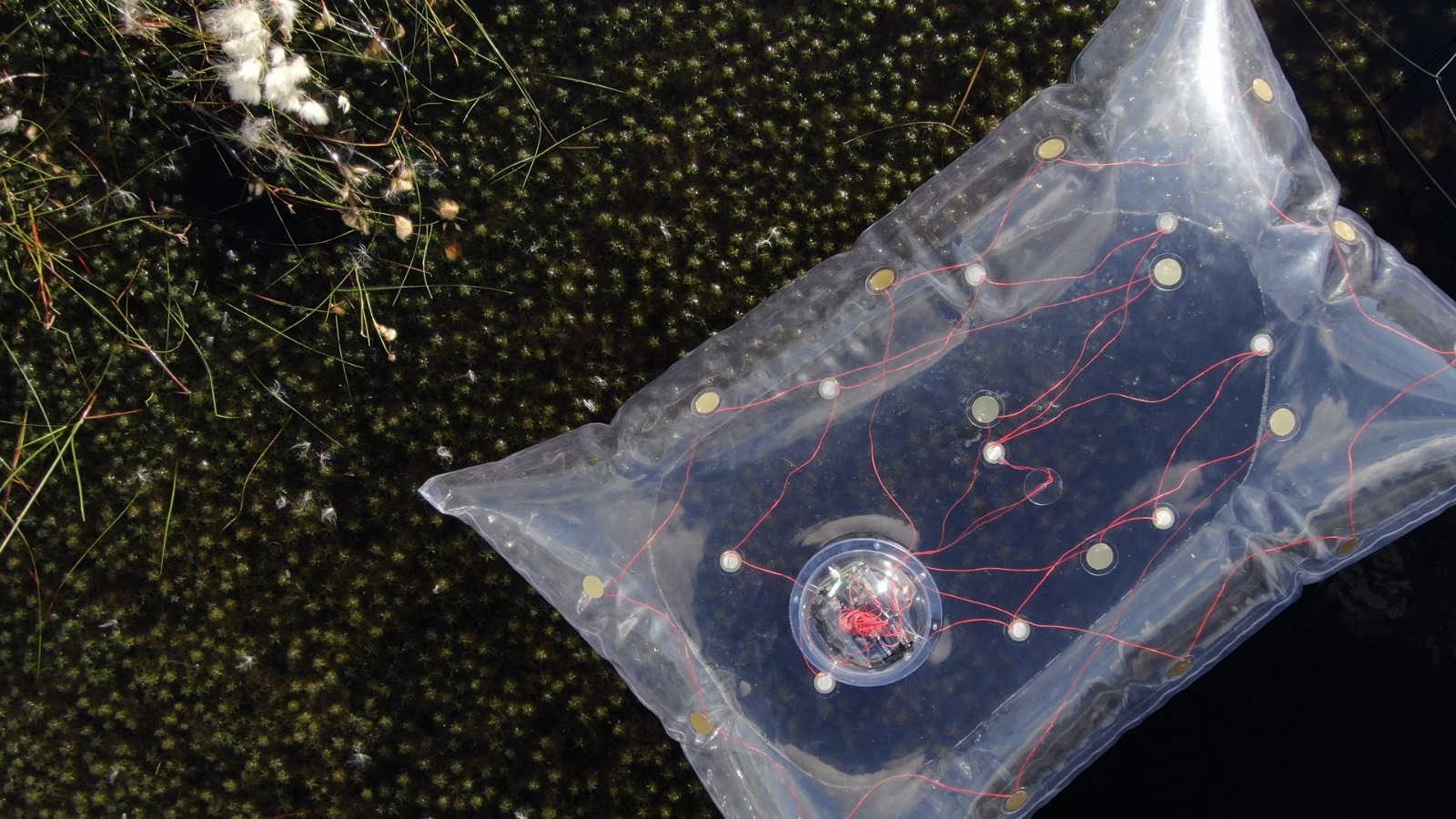
The inflatable devices resonate with their surrounding space, taking up their emitting frequencies and enhancing the listener's capacties to access remote environments without physically being there. Listening over longer periods allows attuning to the transformations and cycles of the ecosystem including their inhabiting lifeforms, each of them active at certain hours of the day and night.
